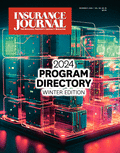Alphabet Inc.’s Google unit told U.S. auto safety regulators that the government’s interpretation of motor vehicle safety rules is “extremely important” to its further development of fully self-driving cars.
In a Nov. 12 letter to the U.S. National Highway Traffic Safety Administration (NHTSA) reviewed by Reuters on Wednesday, the director of Google’s self-driving car project said the agency’s decision on how to construe safety regulations “will have major impact” on its development.
NHTSA told Google in a Feb. 4 letter that it agreed it could consider a Google self-driving computer system as the “driver” of the vehicle – a major boost to getting self-driving cars on the road. But the agency but stopped short of agreeing to immediately waive all safety rules needed to allow fully self-driving cars on the roads as sought in Google’s letter.
In a statement on Wednesday, Transportation Secretary Anthony Foxx said: “We are taking great care to embrace innovations that can boost safety and improve efficiency on our roadways. Our interpretation that the self-driving computer system of a car could, in fact, be a driver is significant. But the burden remains on self-driving car manufacturers to prove that their vehicles meet rigorous federal safety standards.”
In the Nov. 12 letter, Chris Urmson, head of Google’s self-driving car project, said the company’s driverless vehicle was designed to “meet or exceed” U.S. safety standards. Urmson also noted that automated systems, such as Google’s, “react faster than human-driven cars” and “will not be subject to driver distraction or impairment.”
In its Feb. 4 response, NHTSA offered its most comprehensive map yet of the legal obstacles to putting fully autonomous vehicles on the road. It noted existing regulations requiring some auto safety equipment, requirements for braking systems activated by foot control, cannot be waived immediately. Federal regulations requiring equipment like steering wheels and brake pedals would have to be formally rewritten before Google could offer cars without those features.
On Wednesday, longtime advocate Clarence Ditlow who is head of the Center for Auto Safety, told Reuters: “It’s better to write a stand-alone rule for driverless vehicles. It may take more work, but the end result is better for the consumer and the driverless vehicle maker. And it may take less time than rewriting all the standards.”
(Reporting by David Shepardson and Paul Lienert; Editing by Sandra Maler; Editing by Sandra Maler)
Related:
- Software Qualifies as a Driver, Says U.S. Safety Agency on Google Self-Driving Car
- U.S. to Ease Safety Rules to Accelerate Driverless Cars
- Technology May Outpace Humans on Road to Automated Driving
- California DMV’s Pedestrian Pace on Self-Driving Car Rules Makes Google Antsy
- Self-Driving Cars Still Need Human Help in California Tests
- Driverless Car Accidents Pile Up As They Obey Laws, Humans Don’t So Much
- Crash Rates Lower for Self-Driving Cars: Virginia Tech Study
Topics Trends USA Auto Legislation
Was this article valuable?
Here are more articles you may enjoy.


 Did Florida Appeals Court Put the Final Nail in the AOB Coffin? Maybe
Did Florida Appeals Court Put the Final Nail in the AOB Coffin? Maybe  Settlements Eclipse $40 Billion in 2024 as PFAS, Reverse Discrimination Claims Emerge
Settlements Eclipse $40 Billion in 2024 as PFAS, Reverse Discrimination Claims Emerge  Musk’s Massive Tesla Lithium Plant Hunts for Water in Drought-Hit Texas
Musk’s Massive Tesla Lithium Plant Hunts for Water in Drought-Hit Texas  California Wildfires Will Likely Lead to Large Economic and Insured Losses
California Wildfires Will Likely Lead to Large Economic and Insured Losses 

